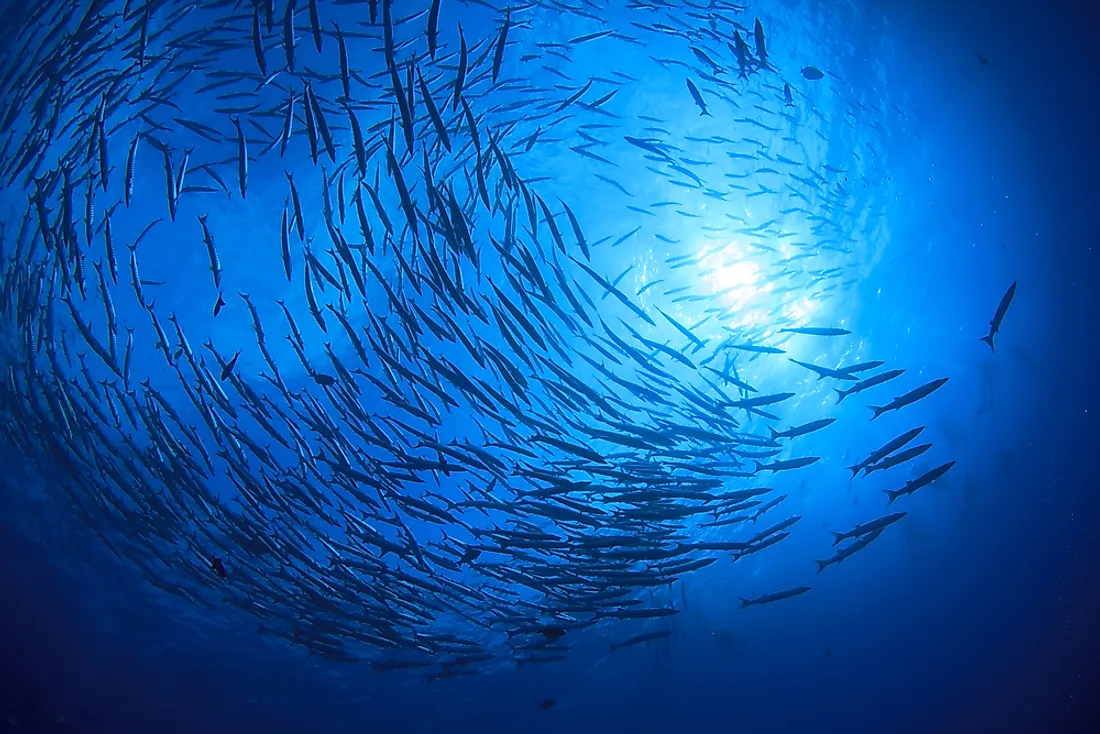How Many Fish Live in the Ocean?

How many Fish Live in the Ocean?
The best estimates by scientists place the number of fish in the ocean at 3,500,000,000,000. Counting the number of fish is a daunting and near-impossible task. The number is also constantly changing due to factors such as predation, fishing, reproduction, and environmental state. About 18,000 fish species have been identified as currently living in the ocean alongside thousands of other sea creatures.
Methods Used to Count Fish
Scientists employ different methods to count fish. The most common include submarines, satellites, drones, and GPS sensors placed on the creatures. Divers come in handy when performing a fish census as they can be able to go underwater and observe and even take pictures of what they see. Scientists also collect data from fishers plying a particular region to be able to estimate the number of a particular species. Scientists have been working to develop new efficient methods to count fish such as the use of Artificial Intelligence. The data collected is fed into a computerized system for easier analysis. It is from this data that estimates along with other information are deduced.
Layers of the Ocean
Researchers have divided the ocean into five primary layers.
- The epipelagic layer, also referred as the sunlight zone, which extend from the surface to a depth of 660 feet. This layer absorbs the most sunlight enabling life to flourish in abundance.
- Lesser light reaches the mesopelagic zone (600-3300 feet) which is also known as the twilight zone. Barreleye and lanternfish are some of the fish species recorded from the twilight zone.
- The bathypelagic layer ranges from 3,300 to 13,100 feet, and it is sometimes referred to as the midnight zone. This layer is characterized by darkness which is only lighted up by the bioluminescence of the marine animals.
- The abyssopelagic layer, at depths of between 13,100 to 19,700 feet, supports little life due to its freezing temperatures and darkness.
- The hadalpelagic layer is the ocean’s deepest zone at 19,700 to 35,797 feet.
Importance of Counting Fish
Taking stock of the number of fish in the ocean is an essential task. It is important to determine the amount of fish available so that it can be estimated how many of them can be taken out for the population to remain sustainable. The records portray whether fishery management goals implemented are efficient and shed light on the fishery trends. The information empowers fishery communities as well as the government to make informed decisions regarding ocean resources. Legal limits placed on fishing, including size and fishing gear restrictions, are intended to preserve fish populations. Counting fish also shows the extent to which certain environmental changes such as the invasion of alien species has affected existing fish populations.
Environmental Issues in Oceans
Overfishing is ranked as one of the major problems affecting fish species, especially when combined with inefficient fishing practices. Overfishing translates to a disruption in the marine ecosystem, and has caused some fish species to be classified as significantly depleted or over-depleted. As more coastal development is undertaken, pollution, and degradation of aquatic habitats are increasing. The ocean has become a dumping site for materials used by humans. Other marine concerns include climate change and invasive species.











